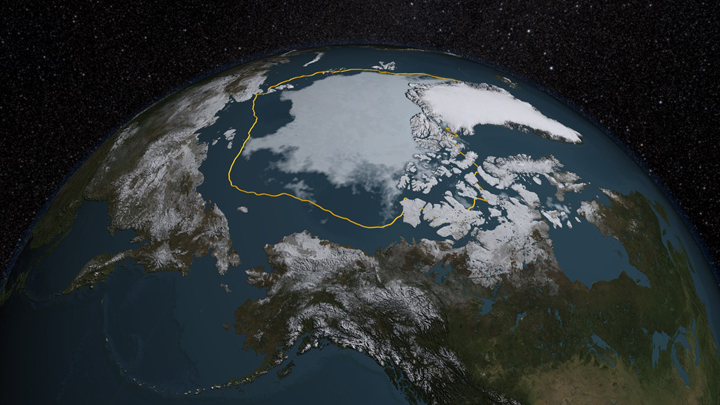After recording the lowest sea ice maximum in February, the National Snow and Ice Data Center (NSIDC) has recorded the fourth lowest summer sea ice minimum on record.

READ MORE: Startling image of emaciated polar bear: Sign of climate change?
The minimum sea ice recorded as of Sept. 11 was 4.41 million square km, about 1.81 million square kilometres lower than the 1981-2010 average. There is a possibility of further melt similar to what occurred in 2005 and 2010 due to changing winds and possible late-season melt.
In recent years meteorological factors played a role in low sea ice extent, but that was not the case in 2015.
“The main thing is that it’s reflecting the long-term trend,” Walt Meier, a NASA glaciologist at the Goddard Space Flight Center told Global News. “We’re seeing more and more low eyars.”
“Things are changing.”
The Arctic ice melt didn’t accelerate in June as it typically does due to the higher solar energy the region receives. However, in July the loss of sea ice picked up speed and continued into August when typically it slows.
One of the reasons for the late acceleration in sea ice melt may have been due to a hole that appeared in Beaufort and Chukchi seas north of Alaska. This hole allowed older ice to melt as the surrounding water absorbed more energy.
The decline of sea ice has accelerated since 1996. In the past 11 years alone, the Arctic has seen the 10 lowest minimum extents in satellite record. The lowest summer sea ice on record was in 2012, which was in part due to a late Arctic cyclone.
The melting Arctic sea ice is often cited as a measure of climate change. The region has warmed twice as fast than any other place on Earth, by roughly 2 C higher than the average.
While the Arctic sea ice is declining, Antarctic sea ice is growing. However, Meier pointed out that the rate of increase is roughly just 1/3 to 1/4 that of the Arctic ice loss. And in Antarctica, some areas are seeing increases while others — such as the West Antarctic — are seeing ice loss.
READ MORE: Startling image of emaciated polar bear sparks climate change concerns
“In the Arctic we’re seeing decreases everywhere. In the Antarctic…it’s much more regional,” Meier said. That is likely due to the differences between the two poles.
“Antarctica is a continent surrounded by oceans, whereas Antarctica is an ocean surrounded by continents.”
Meier said that the continuing trend of sea ice loss is concerning due to the important role the ice plays in our climate. The loss has the effect of a runaway feedback loop: the ice melts, the sun’s energy warms the oceans, which causes further melt, and so on. This could lead to changes in weather patterns, such as the jet stream, and lead to more extreme weather events.
“What happens in the Arctic doesn’t stay in the Arctic.”




Comments